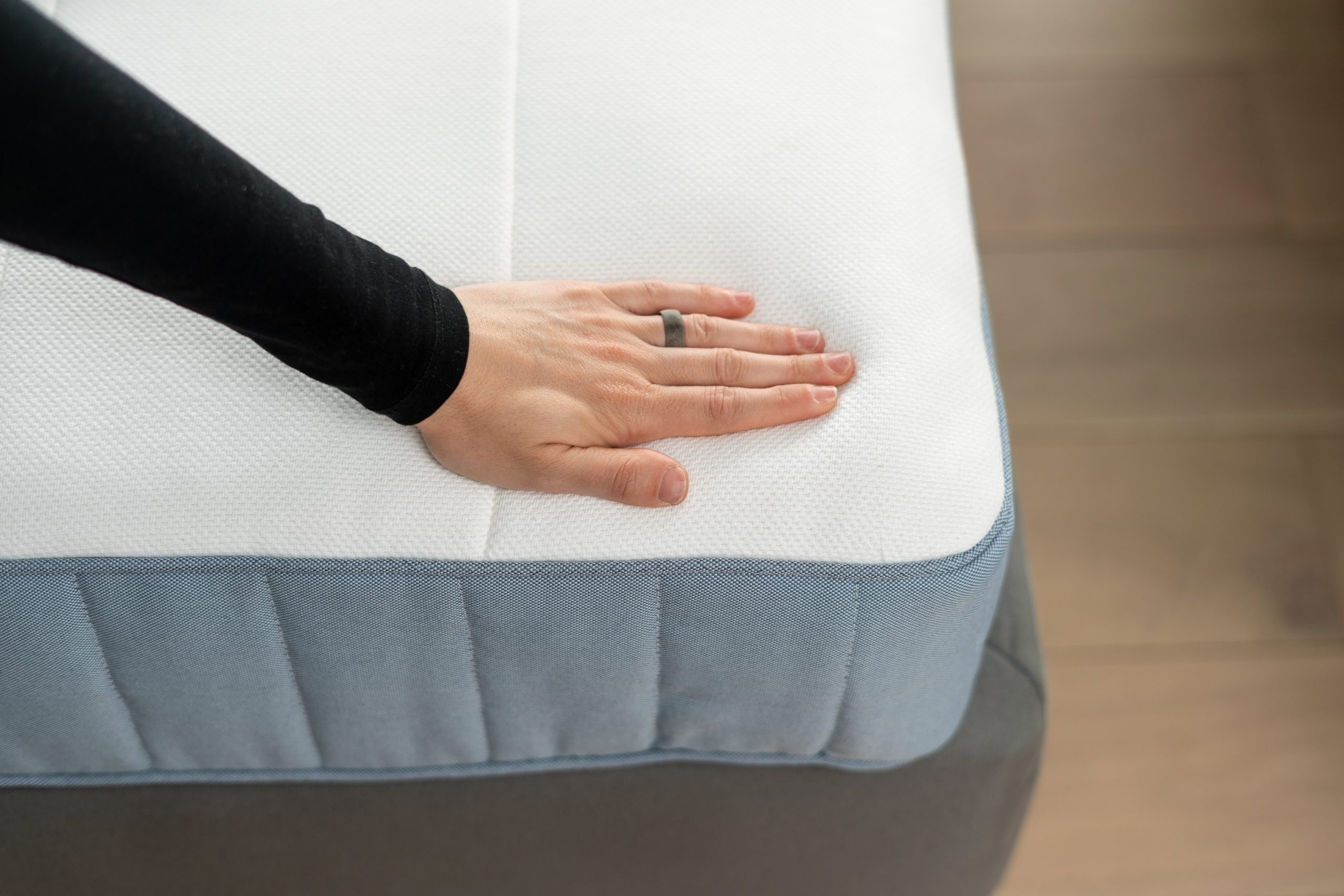Polyurethane Foam Mattress Topper Safety: What You Need to Know
Getting a good night's sleep is essential for our physical and mental well-being, and that's why many people invest in a high-quality mattress. However, some may find their mattresses too firm or too soft, and that's where mattress toppers come in. These handy additions can provide extra comfort and support, but it's important to be aware of the potential safety risks associated with certain types of mattress toppers, particularly those made of polyurethane foam.
The Dangers of Polyurethane Foam Mattress Toppers
Polyurethane foam is a synthetic material commonly used in various products, including mattress toppers. While it may seem like a harmless and comfortable material, polyurethane foam can actually pose several dangers to our health and the environment. This foam is made with potentially harmful chemicals, such as formaldehyde, benzene, and toluene, which can off-gas (release fumes) and be absorbed by our bodies while we sleep.
How to Choose a Safe Polyurethane Foam Mattress Topper
If you're considering purchasing a polyurethane foam mattress topper, it's crucial to choose one that is certified as safe. Look for products that are CertiPUR-US® certified, which means they are free of harmful chemicals and have been tested for low emissions. You can also opt for organic or natural latex mattress toppers, which are made with natural materials and are more environmentally friendly.
Understanding the Chemicals in Polyurethane Foam Mattress Toppers
The chemicals used to make polyurethane foam can be hazardous to our health. Formaldehyde, for example, is a known carcinogen and can also cause respiratory issues and skin irritation. Benzene and toluene are also toxic chemicals that have been linked to various health problems. These chemicals can be especially dangerous for children and pregnant women, as their bodies are more sensitive to toxins.
Tips for Using Polyurethane Foam Mattress Toppers Safely
If you already have a polyurethane foam mattress topper, there are a few precautions you can take to minimize your exposure to harmful chemicals. Make sure to let the topper air out for a day or two before using it, as this can help reduce the off-gassing. You can also cover the topper with a protective barrier, such as a mattress pad or cover, to create a barrier between you and the foam. If you experience any symptoms, such as headaches, dizziness, or respiratory issues, discontinue use of the topper immediately.
Potential Health Risks of Polyurethane Foam Mattress Toppers
The chemicals in polyurethane foam can have a range of negative effects on our health. In addition to the short-term symptoms mentioned above, long-term exposure to these chemicals can lead to more serious health issues, such as organ damage and certain types of cancer. Children and pregnant women are at a higher risk of developing these health problems, so it's important to be cautious when using polyurethane foam products around them.
Eco-Friendly Alternatives to Polyurethane Foam Mattress Toppers
If you're looking for a safer and more environmentally friendly option, there are several alternatives to polyurethane foam mattress toppers. Natural latex toppers are a popular choice, as they are made from the sap of rubber trees and do not contain harmful chemicals. Wool and cotton toppers are also natural and non-toxic options that provide comfort and support without the use of synthetic materials.
The Importance of Certifications for Polyurethane Foam Mattress Toppers
When shopping for a polyurethane foam mattress topper, it's crucial to look for products that are certified by independent organizations. The CertiPUR-US® certification is one to look for, as it ensures that the foam is free of harmful chemicals and has been tested for low emissions. Other certifications to consider include Greenguard Gold and OEKO-TEX Standard 100, which also have strict standards for the use of chemicals in products.
How to Properly Dispose of Polyurethane Foam Mattress Toppers
When it's time to replace your polyurethane foam mattress topper, it's important to dispose of it properly. Simply throwing it in the trash can harm the environment, as the foam can take hundreds of years to decompose. Look for recycling programs in your area that accept foam products or consider repurposing the topper for other household uses, such as cushioning or insulation.
Choosing a Non-Toxic Polyurethane Foam Mattress Topper
If you still prefer the comfort and support of a polyurethane foam mattress topper, there are non-toxic options available. Look for products that are made with plant-based or bio-based materials, as these are less likely to contain harmful chemicals. You can also choose to purchase a topper from a company that uses eco-friendly and sustainable manufacturing processes.
The Importance of Choosing a Safe Polyurethane Foam Mattress Topper for Your Bedroom

Understanding the Risks of Polyurethane Foam Mattress Toppers
The Dangers of Toxic Chemicals
 One of the main concerns with polyurethane foam mattress toppers is the presence of toxic chemicals. These chemicals, such as formaldehyde, benzene, and toluene, are used in the production of polyurethane foam and can release harmful fumes into the air. This can lead to respiratory issues, skin irritation, and other health problems, particularly for those who are sensitive to chemicals.
In addition, polyurethane foam has been found to contain volatile organic compounds (VOCs) which can also have adverse effects on human health. These compounds can be released as off-gassing, especially when the foam is new, and can contribute to indoor air pollution.
One of the main concerns with polyurethane foam mattress toppers is the presence of toxic chemicals. These chemicals, such as formaldehyde, benzene, and toluene, are used in the production of polyurethane foam and can release harmful fumes into the air. This can lead to respiratory issues, skin irritation, and other health problems, particularly for those who are sensitive to chemicals.
In addition, polyurethane foam has been found to contain volatile organic compounds (VOCs) which can also have adverse effects on human health. These compounds can be released as off-gassing, especially when the foam is new, and can contribute to indoor air pollution.
Choosing a Safe Polyurethane Foam Mattress Topper
 With these potential risks in mind, it is important to choose a safe polyurethane foam mattress topper for your bedroom. Look for
certified organic
or
certified non-toxic
options that have been tested for harmful chemicals. These products will often have labels such as "GreenGuard Gold" or "CertiPUR-US," indicating that they meet strict standards for low emissions and safe materials.
Another option is to choose a
natural latex
or
wool
mattress topper, which do not contain polyurethane foam and are known for their breathability and comfort. These materials are also more environmentally friendly and sustainable compared to traditional polyurethane foam.
With these potential risks in mind, it is important to choose a safe polyurethane foam mattress topper for your bedroom. Look for
certified organic
or
certified non-toxic
options that have been tested for harmful chemicals. These products will often have labels such as "GreenGuard Gold" or "CertiPUR-US," indicating that they meet strict standards for low emissions and safe materials.
Another option is to choose a
natural latex
or
wool
mattress topper, which do not contain polyurethane foam and are known for their breathability and comfort. These materials are also more environmentally friendly and sustainable compared to traditional polyurethane foam.
Conclusion
 When it comes to your bedroom, safety should always be a top priority. By understanding the potential risks associated with polyurethane foam mattress toppers and choosing safer alternatives, you can create a healthier and more comfortable sleep environment. Remember to do your research and look for
certifications
when shopping for a polyurethane foam mattress topper and prioritize your health and well-being.
When it comes to your bedroom, safety should always be a top priority. By understanding the potential risks associated with polyurethane foam mattress toppers and choosing safer alternatives, you can create a healthier and more comfortable sleep environment. Remember to do your research and look for
certifications
when shopping for a polyurethane foam mattress topper and prioritize your health and well-being.






















































:max_bytes(150000):strip_icc()/SleeponLatex-b287d38f89374e4685ab0522b2fe1929.jpeg)
































